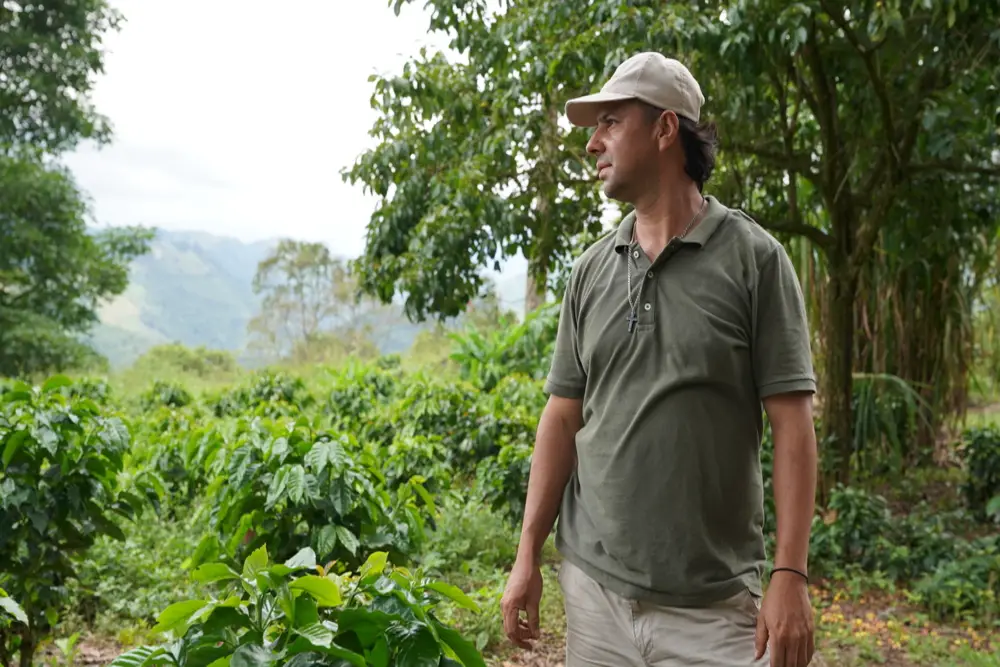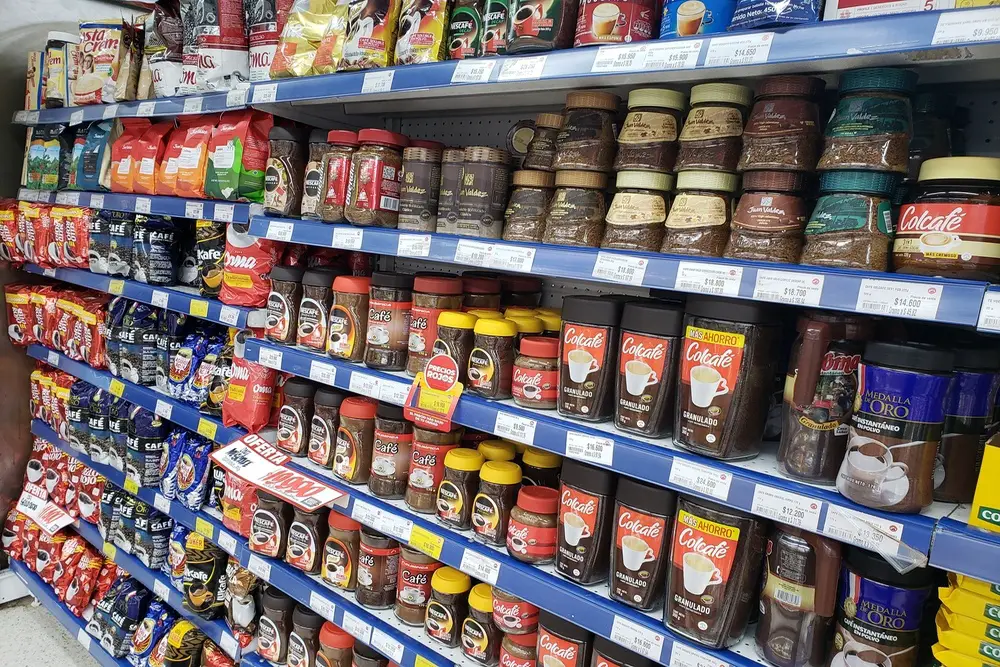Over the years, both producers and consumers have changed their consumption and production habits. However, the coffee industry is still destroying forest areas.
Table of Contents
What is a sustainable coffee plantation?
In earlier years, when the demand for coffee was very high worldwide, environmentally unsustainable practices were used. Coffee varieties that do not require shade trees for efficient growth were also discovered during these years. As a result, deforestation increased.
According to studies by the World Resources Institute (a non-governmental organization working to create wealth under the banner of sustainability in natural resources), expanding the agricultural sector contributes to global deforestation. According to their study, between 2001 and 2015, the agricultural sector was responsible for 26% of global deforestation.
The main coffee producers (Colombia, Brazil, Peru, Indonesia, Madagascar and Vietnam) estimated that between 2001 and 2015 a total of about 2 million hectares of forest were cleared for coffee cultivation, with 1.1 million hectares for the cultivation of Robusta coffee and 0 .9 million hectares were used to grow Arabica coffee.
Due to these growing conditions, sustainable alternatives were sought.
What is a sustainable coffee plantation?
Broadly speaking, sustainable coffee is coffee that aims to preserve nature while improving the living conditions of those who grow and process it.
It is coffee grown in harmony with nature, where coffee farmers have ecological parameters that respect each natural resource and contribute to the conservation of nature.
When coffee farmers respect these parameters, they not only improve the quality of their coffee, but also their quality of life.
Shade trees
These are usually large trees with a large canopy and leaves that let in sunlight, retain moisture in the soil, and provide habitat for birds that eat harmful insects.
In hot climates, shade trees are paramount.
How many shade trees should a crop have?
According to experts, between 40 and 70 trees per hectare is ideal.
Pillars of sustainable coffee
Due to the promotion of sustainable practices, sustainable coffee consists of five basic pillars.
Creation of a quality product
The coffee is produced under strict quality controls and in accordance with certification standards for organic and sustainable cultivation.
Management and conservation of natural resources
Crops that do not deplete natural resources without harming the ecosystem, shade crops that help reduce greenhouse gas emissions, and create new habitats for animals and plants.
Economic improvements and fair trade
Producers who meet the environmental goals to produce quality coffee and who are able to compete in the market by covering their production costs and making reasonable profits.
Quality of life and social participation
Production with minimal costs that guarantees social and integral development for coffee farmers, promotion of coffee organizations that support the management of their crops.
Sustainability
A production that prioritizes quality, that respects the planet and improves the living conditions of coffee farmers in order to reduce social inequality.
Environmental benefits from reducing deforestation
Proponents of new methods of growing coffee don’t want to replace the crops already grown, they want to build on what’s already being grown.
It is hoped that many coffee farmers will join these measures to encourage the transition to fully sustainable models.
Sustainable coffee cultivation without deforestation promotes forest survival, supports reforestation measures, protects biodiversity, contributes to the preservation of watersheds and creates livelihoods for coffee farmers.
The conservation of the environment is sought to protect the diversity of fauna and flora, and for this reforestation is fundamental, since coffee trees and other tree species bring benefits to producers and the ecosystem.
Encouraging this new form of farming has many benefits for our ecosystems.
A soil without erosion preserves the natural fertility of the soil.
- Shade trees increase soil organic matter and nitrogen levels.
- The more organic matter in the soil, the more nutrients are delivered to the coffee trees.
- Planting shade trees ensures an ecosystem that is resilient to climate change.
- Trees are excellent carbon sinks (a system or process that removes carbon dioxide from the atmosphere), meaning they help reduce greenhouse gases.
- A diverse harvest can yield other agricultural products that contribute to the economy of coffee farmers.
- Biological corridors are created that provide habitat for many species of birds, mammals and insects.
- Biological control agents for crop pests and diseases are produced naturally.
Initiatives to reduce deforestation in coffee plantations
Around the world there is an interest in reducing deforestation caused by the food we consume, and coffee-growing countries are not indifferent. In Ecuador, the “A Cup of Learning” program was developed, in which growers are trained in the production and marketing of coffee and sustainable products.
In Peru, the Peruvian National Coffee Plan 2019-2030 was developed, which strives for economic, equitable, competitive and sustainable growth while considering the sustainable use of natural resources.
In Colombia, the coffee, forest and climate agreement was signed to preserve the forests in the coffee-growing regions. It explains that the future of forests depends on sustainability and coffee farmers, while also trying to close the poverty and inequality gap in the coffee sector.
Coffee, forest and climate deal
Colombia is at the forefront of implementing sustainable programs and practices. The agreement aims at the care and conservation of forests related to coffee production and adaptation to climate change and has been signed by all actors in the supply chain.
In Colombia, one of the main coffee-growing countries, the value of the coffee harvest is estimated to be 20% of the GDP (Gross Domestic Product) of the agricultural sector, coffee cultivation generates 720,000 jobs and is an activity that stimulates consumption and investment in 602 communities in the country.
Reforestation program in Colombia
In 2021, the FNC (National Federation of Coffee Growers) carried out a project to reforest the coffee-growing area in Colombia and to maintain the water zones, planting 250,000 trees as shade trees for coffee cultivation on 6,566 hectares.
From 2019 to 2022, 1,188,290 native trees were planted in 9 departments, including 92 native species of high ecological value used for conservation purposes, and 352,092 trees to be planted in 2021 in 50 coffee-growing communes.
In addition, a diploma course on “Integrated Environmental Management in Coffee Cultivation” has been launched to train coffee farmers in best practices for the use and management of natural resources.
Water saving in coffee plantations
In the past in Colombia the so-called Correteo channels were used, which were structures that allowed the coffee to be washed and classified with constant water; however, this method polluted a lot of water.
However, one company has developed technology that adapts to growers’ size and budget, reducing water use by 750 milliliters to produce one kilo of coffee.
In addition, leaflets were distributed explaining the maximum water consumption in coffee production. Here is a summary of the leaflet.
Once the coffee pods are harvested and, in the hopper, it is recommended to use sorting systems with water recirculation to reduce water consumption.
- Crush the mass and put it in the shredding machine without water.
- When washing the coffee Use a four-rinse technique that allows for less water use, reducing water usage by up to 88%.
- Properly calibrated mechanical degumming (removal of mucus by physical means) can reduce water consumption by up to 97.5%.
- The use of water circulation systems in medium and large grinders reduces the water consumption for transporting the coffee.
Management of the waste generated in the coffee plantation
One problem coffee farmers face is pollution from coffee production waste, such as B. Plastic packaging and others, as there are no collection points in the coffee-growing areas of the country.
However, the coffee farmers have been made aware of the need to set up collection points for solid waste and they have also been trained to recycle some of this waste by turning it into handicrafts.
Environmental program
The various initiatives show that it is possible to produce coffee in a sustainable way and that continuing these projects helps the environment and coffee farmers.
The program states that sustainable and productive production, which also contributes to the conservation and protection of natural resources and reduces ecosystem diversity, must contribute to the well-being of coffee farmers.
The Environment Program is another initiative that has reduced water consumption and pollution through sustainable measures and practices to preserve and care for natural forests and stream beds, while also reducing the use of agrochemicals (pesticides, insecticides, herbicides, fungicides and nematicides) as well as organic and inorganic waste was reduced and the fertile soil was preserved.
Progress in sustainability in the Colombian coffee region
The FNC anticipates that by 2027, a large number of coffee farms will be able to incorporate sustainability criteria. In 2021, a pilot project to improve sustainability on farms in Antioquia, Huila and Santander was launched in partnership with international coffee chain Tim Hortons.
This project includes the following.
- 1,400 farms fertilized according to soil analysis
- 200 farms with improved infrastructure
- Hectares in natural forests with protection agreements
- 1,415 water filters installed
- 2,500 coffee farmers trained to improve health and safety conditions
Environmentally Sound Practices
Some responsible practices have been developed in the coffee-growing countries to conserve the land.
Water
With this project, they have committed to using natural resources sparingly and efficiently, from everyday life to the production of coffee, through things as simple as turning off the tap when brushing your teeth so as not to waste a drop of water, or creating the already mentioned, which explains how water consumption in coffee production can be reduced. Using these and other techniques, they have achieved a reduction of 24 liters of water per kilogram of coffee.
Energy
Given the importance of energy, responsible practices are encouraged to maintain energy efficiency and effectiveness. At the end of the day, it is recommended not to leave the computers idle, turn them off completely and, if possible, unplug the power supplies.
Solid waste
Solid waste reuse offers many opportunities. One of them is moving towards the circular economy (recycling materials and products by turning them into new products as often as possible) by using such waste to create new products.
Soil degradation when growing coffee
For many years, bad farming practices led to the belief that soil was a renewable resource, and so more and more hectares of soil were mistreated. However, many years later we suffer the consequences: a poorly maintained soil suffers from physical degradation such as erosion and compaction (soil erosion), but also chemical degradation leading to salinization, acidification (accumulation of salts in the soil) and the accumulation of heavy metals.
As a result of these consequences, year after year harvests decline both quantitatively and qualitatively, they lose productivity and farmers are forced to expand their acreage, leading them to cut down and burn forests as they have to make a living. However, this in turn brings with it catastrophic losses in terms of biodiversity and ecosystems, which are not only detrimental to ecosystems but can also lead to infertile soils. Because the soil, when it is burnt and bare and exposed to rain, leads to losses of fertile soil through run-off.
After all these unfortunate events, when forests are burned, not only the forest is burned, but also life, the organic matter of the soil responsible for the maintenance of microorganisms, insects and earthworms, fundamental to the maintenance of the ecosystem is.
If we look at it that way, it’s all a chain of previous wrong decisions based on misinformation. In the digital age, we can no longer allow that to happen because it brings us to a point of no return.
Is soil fertility renewable?
Soil is the most important thing when it comes to growing food and without agriculture there is no food for everyone. Contrary to what many believe, soil is a non-renewable resource and the reasons for this are very simple.
It can take anywhere from 100 to 400 years for one centimeter of arable land (suitable for cultivation) to form under natural conditions, depending on factors such as altitude, climate and existing vegetation.
If the governments and the coffee farmers are not aware of this, we will have less arable land every day due to barren and unusable soil.
Coffee production could be reduced
Climate change is an impetus for the vacuum for change, because due to rising temperatures, the forest areas where coffee grows have decreased, and because we used to consume natural resources without regret, many areas are already affected.
There are places where soil erosion has done more damage than meets the eye, even the cradle of wild coffee in its Arabica variety is under complete threat. There are findings that are very worrying because there are communities like the Gomma in Ethiopia whose socio-cultural practices are linked to coffee and the forests where the coffee trees grow.
Not only do they feel that their culture is in jeopardy because coffee is their heritage, but the community sees coffee as an integral part of their daily lives and they have a saying that goes, Bunni keenya where hundumaa keenya”, which means something like “our coffee is our everything”.
From Ethiopia it is reported that the promotion of organic coffee, coffee-based tourism and sustainable entrepreneurship in the coffee forests is necessary to mitigate these changes.
How we can help mitigate climate change
There are many people who are changing their habits in favor of more sustainability. The agricultural sector is part of it.
Are shady trees our salvation?
In addition to the reforestation that is being carried out in many areas of the world, there are also many areas where shade trees are planted to improve harvests and increase the quality of the ecosystem, because trees not only provide shade but also offer many benefits.
- They strengthen the roots of cultivated plants
- Facilitate water drainage in the ground
- With their dried leaves, they provide the soil with organic material
- They provide firewood, lumber, or food when fruit trees are used as shade trees
Best Shade Trees
According to experts, legumes are the best complement to coffee trees.
- Guamo Inga
- Calliandra Charcoal Tree
- Matarraton Gliricidia
- Saman Samanea
- Chachafruto Erythrina
Keep the ground clean for the trees
You should not use a machete to clean the bottom of your coffee trees as you can cause wounds that fungi can enter and infest your seedling. Using a hoe is also not advisable as this tool allows you to dig up the fertile soil and create puddles that can drown your tree when it rains.
Ideally, weeding should be done by hand as this allows you to control the force with which you remove debris. Remember that you need to clean the soil in order for the coffee tree to grow healthily.
Organic fertilizer – a step towards change
In recent years, fertilizers have been developed that can completely change the face of agriculture as their cost is much lower compared to synthetic fertilizers, but there are still major challenges.
The ideal is to start with 10% organic fertilizer and the remaining 10% synthetic products and increase this ratio in favor of organic fertilizer with each fertilizer application.
Perhaps the most important change is the pedagogy that should be implemented in coffee growing regions to demonstrate to coffee farmers the potency and efficiency of these products versus their synthetic counterparts. Manufacturers of organic fertilizers hope that in the long term the use of synthetic fertilizers will become obsolete and that many soils can be regenerated with natural products.



